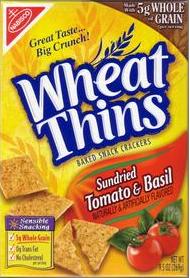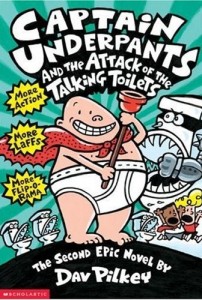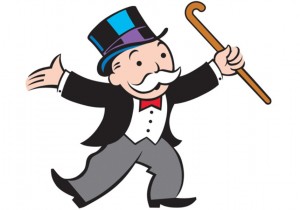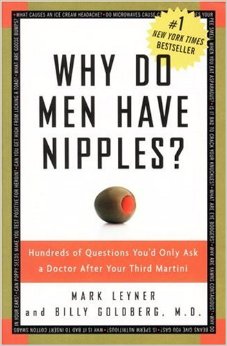 It’s the Wheat Thins that get me every time. The anxiety starts as soon I walk down the cracker aisle. Should I go for the low sodium or the reduced fat? The ranch flavor looks good too, but the Harvest Five-Grain Wheat Thins are on sale. What’s the difference between those and the multi-grain kind again?
It’s the Wheat Thins that get me every time. The anxiety starts as soon I walk down the cracker aisle. Should I go for the low sodium or the reduced fat? The ranch flavor looks good too, but the Harvest Five-Grain Wheat Thins are on sale. What’s the difference between those and the multi-grain kind again?
Before I know it, my head is spinning with visions of calorie and cost calculations and cheese combinations and I’ve spent 17 minutes that I don’t have to spare talking to myself and staring at a shelf full of crackers. What are Chicken in a Biscuits? How do they get them in there?
Am I the only one who has problems making such mundane decisions?
Apparently not.
Decision-making is a source of stress for enough people that you can actually get a degree in Decision Science these days. Evidently Carnegie Mellon University is one of the leading centers in the world for studying decision-making, so I checked out their website to see if they could help me.
No luck. Apparently in order to learn how to make decisions scientifically there are lots of math classes involved, which seems like it would take way too much math. If I could calculate things in my head faster, then I wouldn’t have any problem making simple decisions.
There are some decisions–whether or not to quit a job, have a baby, color your hair, lie about whether you ate that last piece of See’s Candy–that should require a little bit of agonizing over. I’m not talking about those kinds of decisions. But agonizing over what kind of crackers to buy can’t possibly be normal. Right?
I turned to the experts.
Psychiatrist Lynne Tan says it is. “People agonize about the consequences of their decisions. There’s always the fear of getting it wrong.”
“Beware of excessive choice: choice overload can make you question the decisions you make before you even make them, it can set you up for unrealistically high expectations, and it can make you blame yourself for any and all failures. In the long run, this can lead to decision-making paralysis, anxiety, and perpetual stress. And, in a culture that tells us that there is no excuse for falling short of perfection when your options are limitless, too much choice can lead to clinical depression,” according to Barry Schwartz, Ph.D., author of The Paradox of Choice: Why More is Less.
The only time I really feel depressed about having too many choices is when I realize how much time I’ve wasted trying to make a choice that ultimately, won’t really make that much difference. So the Honey Wheat Thins might clash a little bit with the spicy pepper jack cheese. Is that really worth spending another minute of my life thinking about? I think not.
According to Dr. Schwartz’s book, most “good” decisions involve these steps: Figuring out your goal or goals; evaluating the importance of each goal; arraying the options; evaluating how likely each of the options is to meet your goals; and picking the winning option. The easy to remember acronym for this is FEAEP. You then use the FEAEP results modify your goals, the importance you assign them, and the way you evaluate future possibilities.
What the FEAEP? I’m sorry, but the consequence of making decisions using that technique would be that I’d spent my entire life talking to myself while wandering the aisles at the grocery store.
From now I’ve got a new decision-making technique–the Coin Of Destiny (COD, patent pending).
I can’t believe it took me so long to decide on this method. It’s so simple. I should have thought of this years ago. Pick a coin. Don’t spend more than three minutes picking out the right coin. If you’re tempted, close your eyes and pick the first coin you touch. Now it’s time to make your next decision. Flip the coin. If you don’t like the outcome of the flip, take the opposite choice. It’s a nearly foolproof approach.
Oh, and if you don’t have a coin handy, check out www.flipacoin.net, a virtual coin flipping site which offers a choice of 91 different coins from 28 different countries.
Come to think of it, the Eeny Meany Miney Mo Of Destiny (EMMMOD, patent pending) might just be the way to go. I’ll decide later.

 Preparing to embark on a week of holiday leisure, I inventoried my reading material and came across the book I’ve been waiting for my whole life. It’s called
Preparing to embark on a week of holiday leisure, I inventoried my reading material and came across the book I’ve been waiting for my whole life. It’s called  Once upon a time I imagined raising my child in an exquisitely gender-neutral environment. None of this pink for girls, blue for boys stuff. I was sure I would raise a boy exactly the same way I would have raised a girl.
Once upon a time I imagined raising my child in an exquisitely gender-neutral environment. None of this pink for girls, blue for boys stuff. I was sure I would raise a boy exactly the same way I would have raised a girl. Punny magazine debuts for the hormonally challenged
Punny magazine debuts for the hormonally challenged




 Why? Because it’s an awfully catchy title.
Why? Because it’s an awfully catchy title.